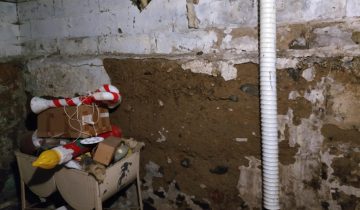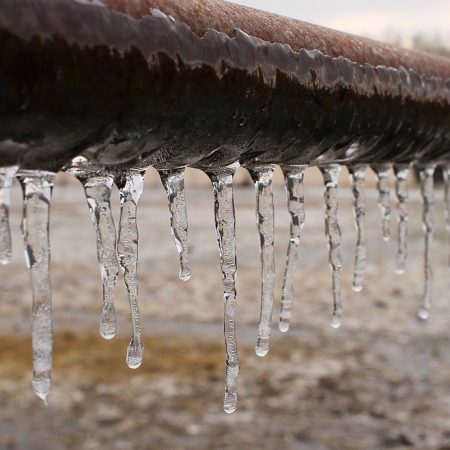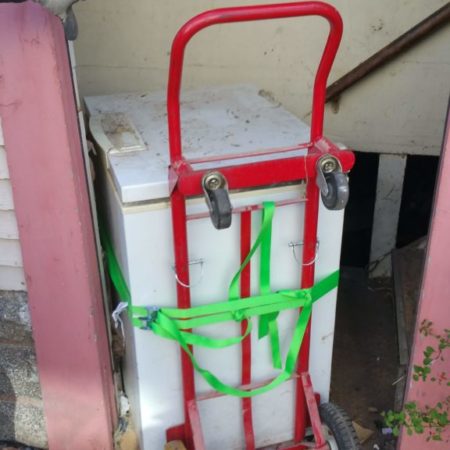Spring has sprung, which means we are a bit too late to trim the apple tree. Everything already has leaf buds, and shouldn’t get pruned until fall now. But, when spring closes one window of opportunity, it opens a new one!
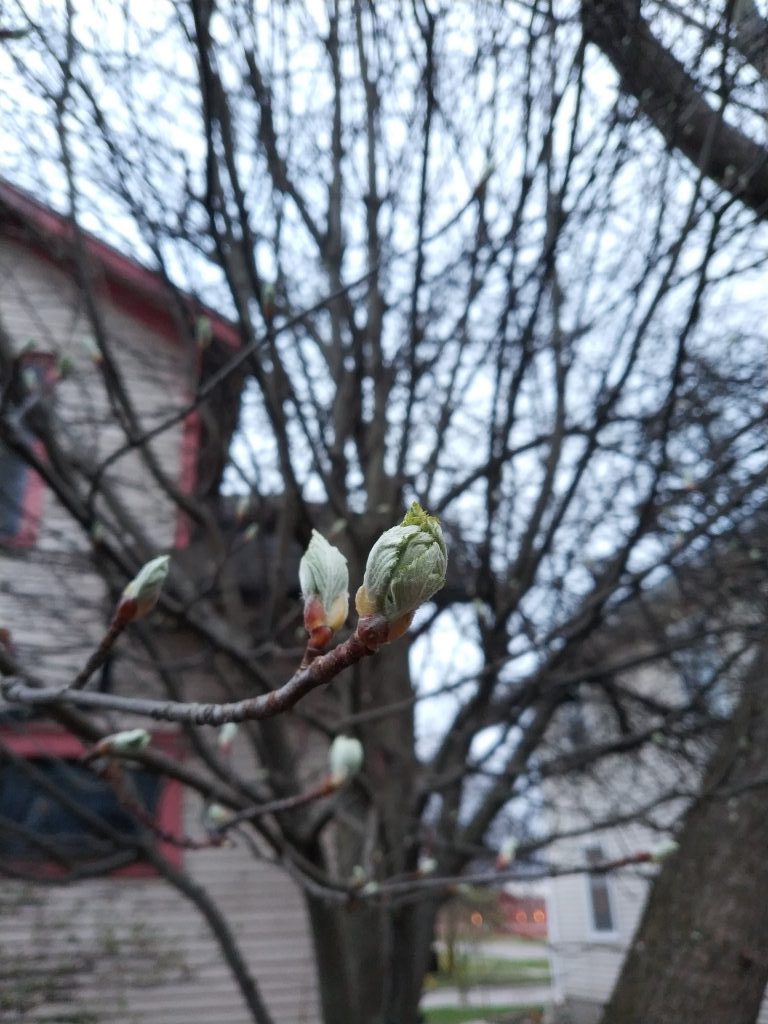
Baby leaves!
Vine Removal
Remember those two apple trees back by the garage? Covered in grape vines? It seemed an easy enough task to tackle on a nice day. Doing this in the spring is a bit easier, because the trees aren’t filled with leaves. This lets us see where vines go, and drag them off with less damage to the tree.

Old photograph for reference.
Most of the vines were hanging low enough and were still strong enough to get pulled down by hand in one piece.

It sure looks like 4 or 5 trees.
Some of the tougher ones went all the way up into the poplar tree at the edge of the backyard. Since they were basically climbable, we used a come-along winch on another tree to pull them down.
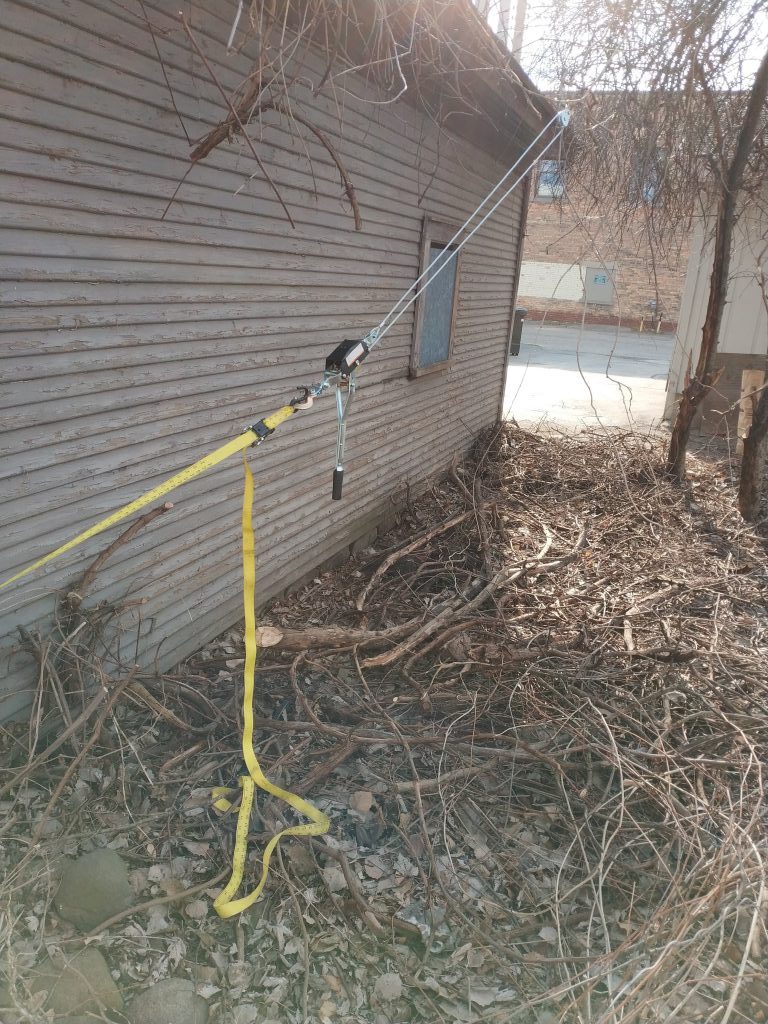
Come along, vine.
Garage Roof
Dragging off all of the vines from the garage exposed the actual garage roof for us. And, it doesn’t look good. At all. The “tree” at the corner of the garage grew up through the decking of the roof and is now permanently lodged there.
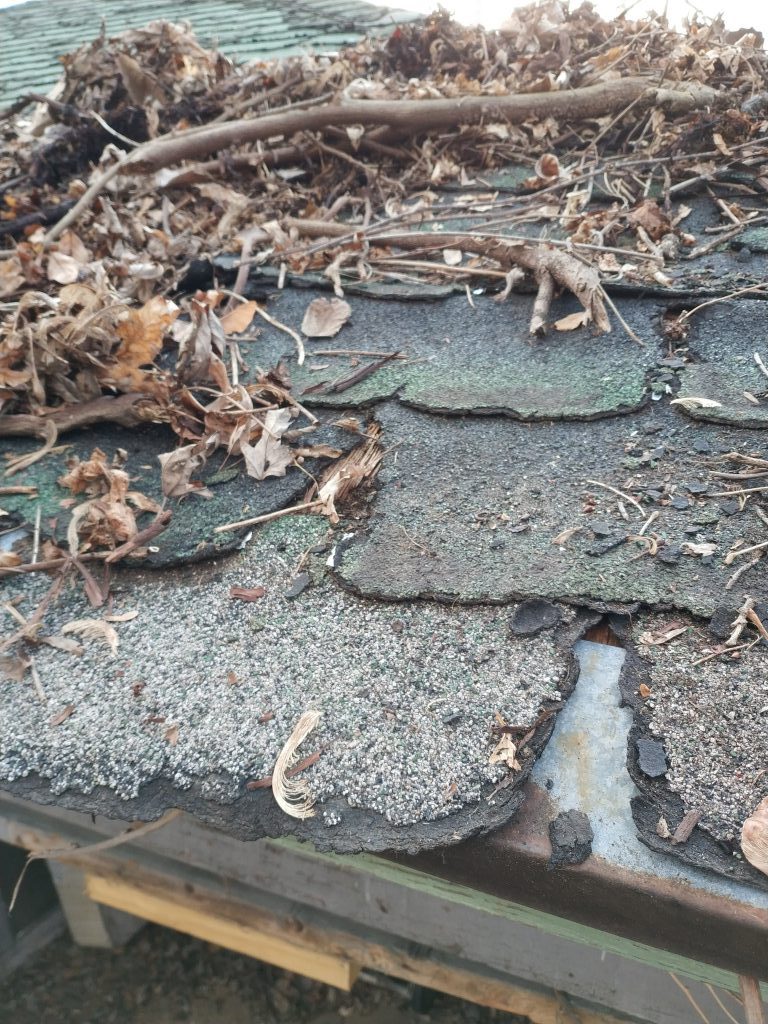
These shingles are barely keeping water out! And that big stick? It’s stuck.
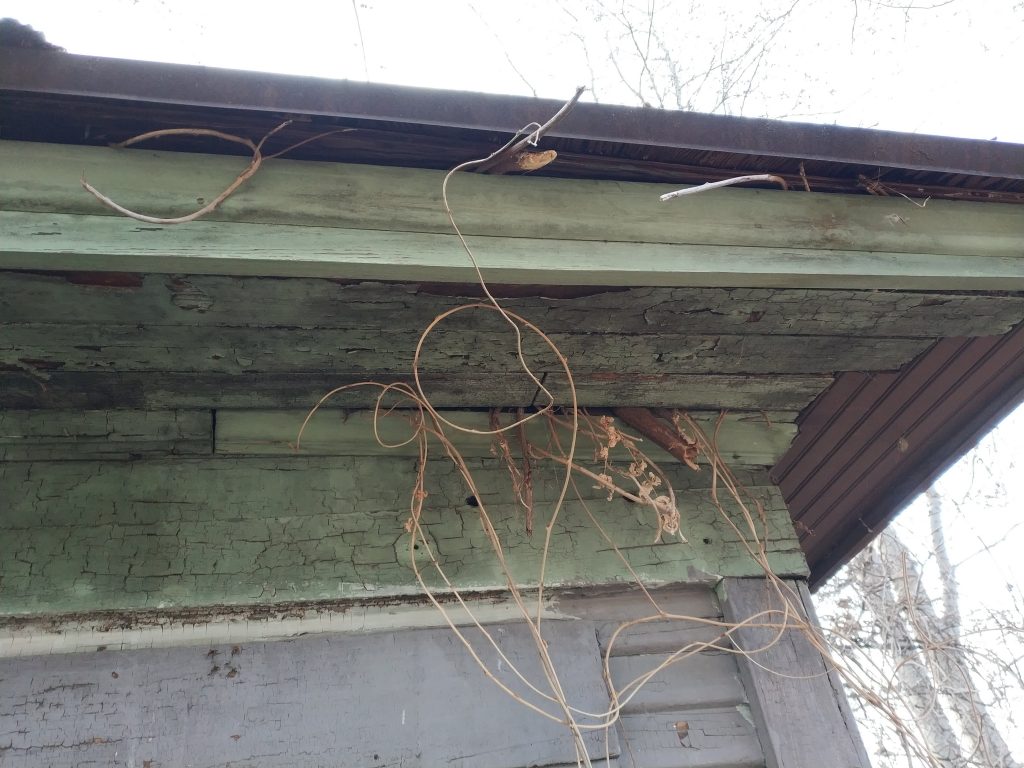
Structural vines.
Some of them can’t even be removed from the soffit because they grew around the structure of the garage. We just cut as much as we could to kill the vines, and will have to deal with the garage structure later. Now we just have a huge pile of vines to bag up!
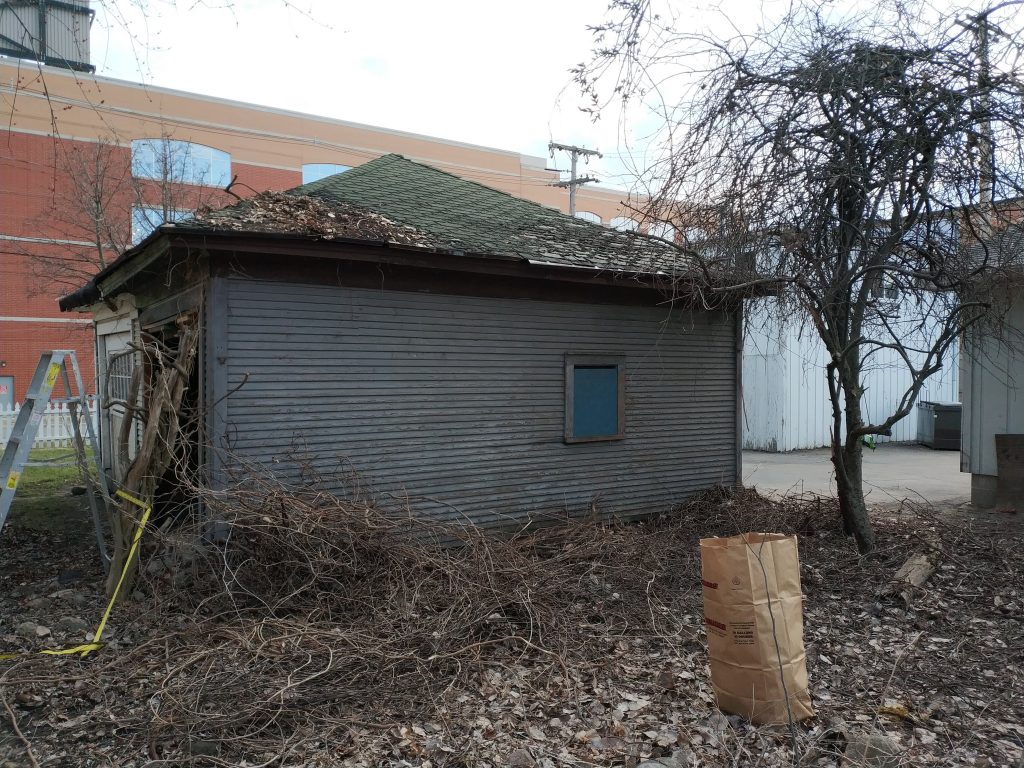
Once these were all cleared away, we were left with around 500 gallons of yard waste (16 bags) and a nice smooth planting area.
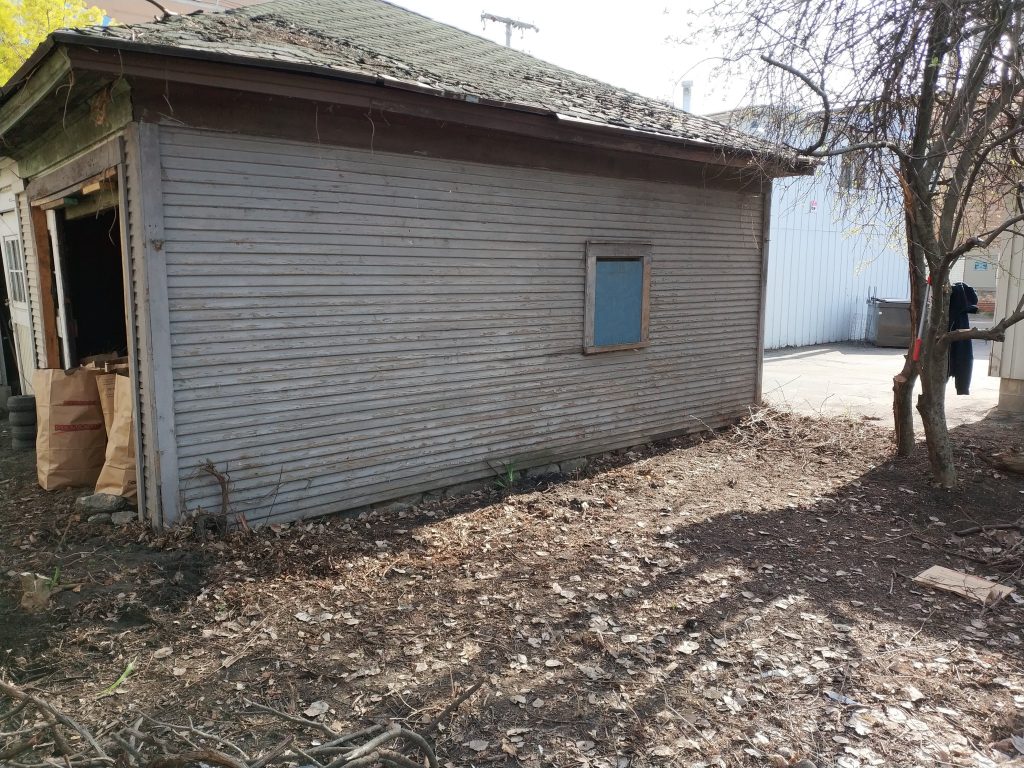
This corner hasn’t seen this much sun in decades!
Fence Removal
Most of the fence had fallen down during the winter and as part of our cleanup just before winter. The remainder of the panels all were rotting at the base, so it was about time to take down the remainder.
This took literally one minute.
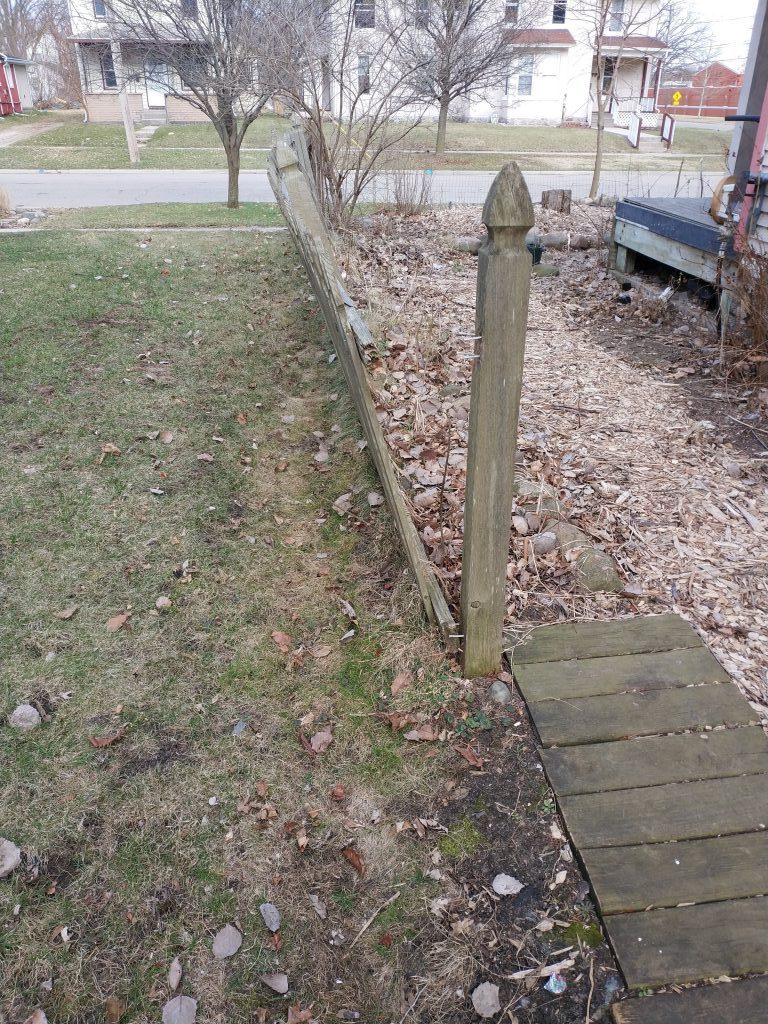
And its easy to see why.
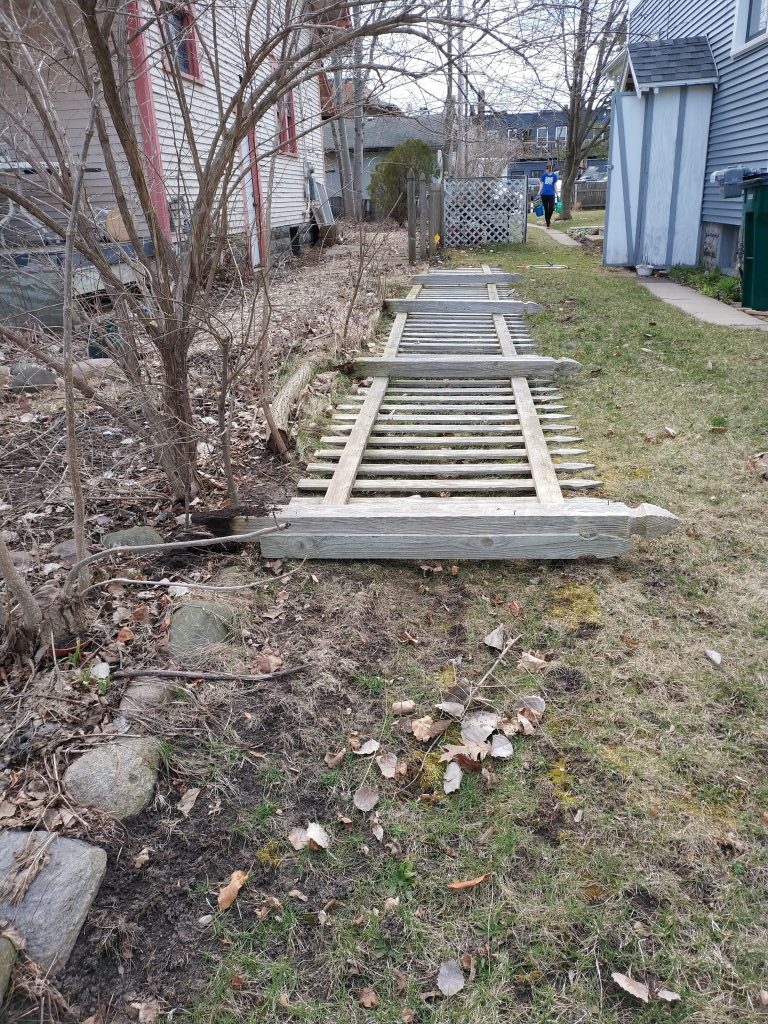
Fence is too tired.
A good lesson here; even with seemingly pressure treated supports, the wood still rotted away to nothing.

Treated fence posts with direct ground contact still only last about 20-30 years, after which point they will end up looking like this. Though, I have a feeling this is more towards the 40 year mark. When we install any new fencing, I’ll cover it in more detail, but there are good ways to help avoid ground contact and keep water away from the post, increasing their life span. One of the ones we use is a metal stake with a clamp mechanism to hold a 4×4 post, though that is less sturdy than a poured sloped concrete footing with gravel on top.
Path Cleanup
Do you also remember that heaved concrete path we busted up? Yeah, that actually extends the whole length of the house.
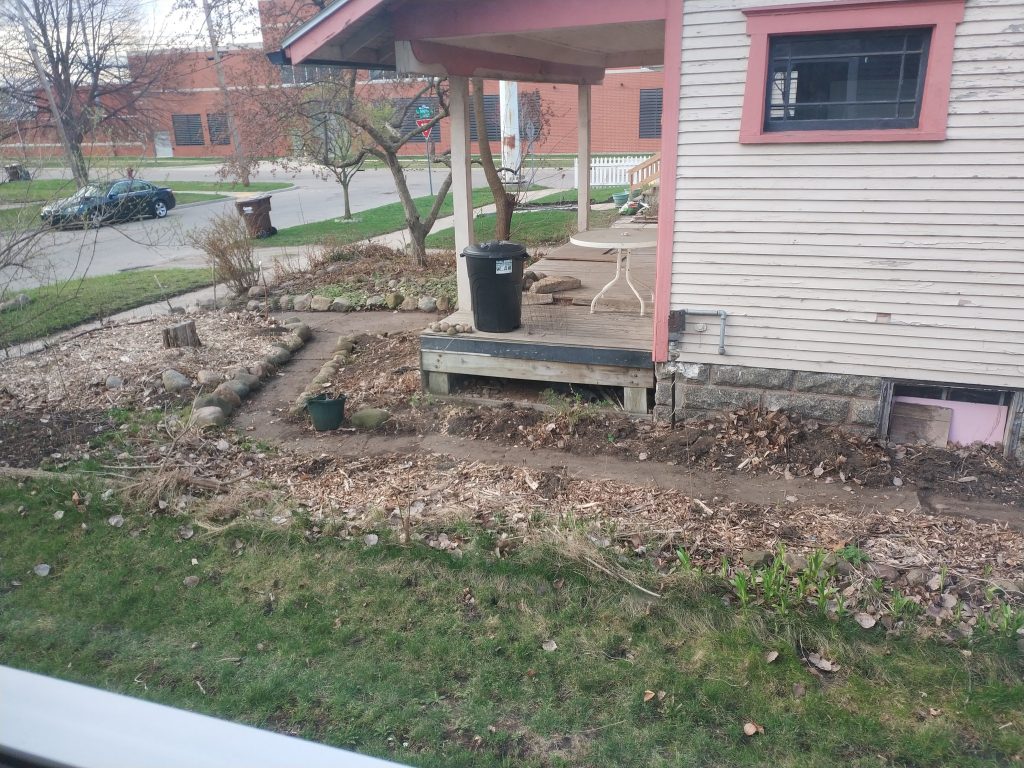
Much easier than walking on mulch.
Cleanup of leaves and other organic matter in the side yard was… spotty at best. Before we bought the place, anyway. If you leave organic matter alone outside, after a few years (about 6 for dry leaves) it will decompose into dirt. There was a good inch of soil covering up this walkway, even though the side yard seemed level with the base of the house.
Good water management dictates that the soil be graded so it is sloped away from the foundation, allowing rainwater and snow melt to move out to the yard and into the soil instead of into the basement. And, the level of the walkway supports this. It had just been so long since anything was removed from the walkway that the compost built itself back up level and flat. This bodes well for future foundation fixes to keep the basement dry, since there is some elevation change we can play off of.
There are even more overgrown bushes and trees to tear out. Ideally, we can put that come-along to better use on those soon. 16 more bags, coming right up!
